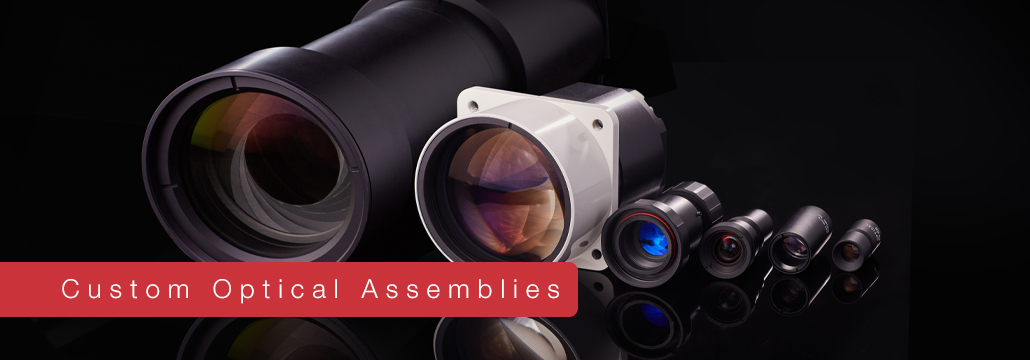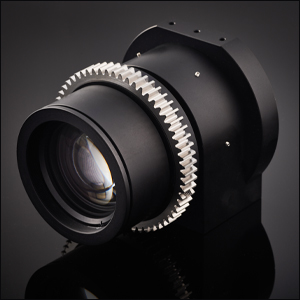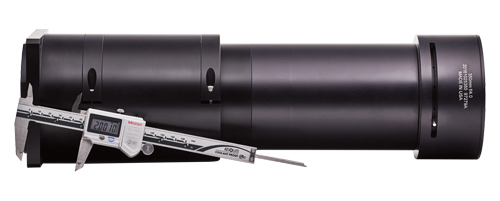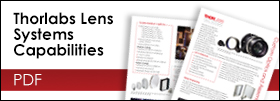Custom Optical Assemblies


Please Wait
Contact Us for Your Custom Optical Assembly
Our engineers and expertise are here for you!

Anthony Giordano
General Manager
Thorlabs Lens Systems
If you have a custom or OEM project that requires expertise in the design and production of an optical assembly, we invite you to contact us about our custom optical assembly capabilities. Our highly experienced team is committed to fully achieving the requirements of your application, and will provide support throughout the entire process from prototype to production.
I look forward to discussing how our team can assist you in achieveing the requirements of your precision-engineered custom optics solutions.

Our expert design engineers work closely with you to design a solution that fully achieves the requirements of your application.
Optical assemblies consist of complex combinations of optical components and mechanical and electronic hardware. Such assemblies are used in a variety of life science, medical, industrial, semiconductor, entertainment, and defense applications (see the Applications tab for details). Proper design, assembly, and testing are all key to ensuring any optical system works as intended. At Thorlabs, we can help you tackle and solve complex optical design challenges and can transition a product seamlessly from early concept planning all the way to volume manufacturing.
Types of Optical Assemblies
Optical assemblies can be classified into two main categories:
Optomechanical Assemblies
Optomechanical design engineers focus on developing hardware solutions for the mounting and precise positioning of optical components, such as mounting cells and other types of metal or plastic housings. The critical factors in their design and manufacture are accuracy and stability. Examples of these types of assemblies include imaging objectives, tube lenses, laser optic assemblies, and optical filter and mirror assemblies.
Electro-Optic Assemblies
Optical electrical design engineering involves integrating electronic hardware, such as printed circuit boards (PCBs) and sensors, into optical assemblies and may also include the design of control software. Similar to mechanical components, these parts must be carefully selected and properly installed to ensure optimal performance. Examples of these types of assemblies include machine vision inspection systems and night vision imaging systems.
| Lens Shape | Description |
|---|---|
| Spherical/Plano | Spherical lenses have a curved surface - either concave or convex - with a constant radius of curvature on one side and a flat (i.e., planar) or curved surface on the other side. |
| Aspherical | Aspherical lenses have a surface with a radius of curvature that gradually changes from center to edge. A single, well-designed aspherical lens can serve as replacement for multiple lenses in a lens assembly (e.g., imaging objective). Key benefits can include lower assembly cost, weight, and optomechanical complexity while maintaining high optical performance. |
| Cylindrical | Cylindrical lenses have a radius of curvature along one axis, which results in light focusing into a line rather than a point or the expansion of the output of a laser source into a symmetrical beam. They are used in industrial laser machine tools, optical metrology systems, life science (microscope) instruments, and projection and motion picture cameras. |
| Acylindrical | Like aspherical lenses, acylindrical lenses have a radius of curvature that changes from the center to the edge and provide the same benefits compared to cylindrical lenses as aspherical lenses do compared to spherical lenses. |
Both types of optical assemblies rely on transmissive and reflective optics, such as lenses, beamsplitters, mirrors, and prisms. Optical lenses are available in a wide range of shapes and sizes. What distinguishes the overall optical properties (i.e., function) and performance characteristics is how the lens surface is designed and manufactured. The table to the right provides a brief description of the types of lenses that are commonly incorporated into optical systems.
Design Considerations for Optical Assemblies
Designing a complex optical assembly (e.g., microscope objective) can be challenging, as multiple components (mechanical, electrical, and optical) all need to work together as intended while meeting any project constraints (assembly size, budget, etc.). Our knowledgeable and skilled design engineering team, broad range of manufacturing capabilities, state-of-the-art assembly and metrology test equipment (including a Class 100 cleanroom), and thin-film coating and environmental test capabilities allow us to manufacture optical assemblies that fully meet all applicable industry-specific requirements.
Whatever the project, we emphasize quality at every stage from prototype to production. Each optical component is carefully designed, manufactured, and tested to ensure it fully meets all specifications.
In addition, our QuickTurn™ Optics capabilities allow us to develop and deliver complex, multi-element optical assemblies in as little as 4 weeks. To learn more about our optical capabilities or to partner with us on your next project, contact us at techsales@thorlabs.com.
Our Design Engineers Rely on Extensive Experience and Cutting-Edge Equipment to Deliver a Variety of Challenging Assemblies:
- Doublets and Triplets
- Fast Lenses
- Focus and Zoom Lens Assemblies
- Wide Field of View (FOV) Lenses
- Athermal Lens Systems
- Imaging Lens Assemblies and Microscope Objectives
Precision Assembly Capabilities Include:
- Industry-Leading Assembly and Metrology Equipment
- Active Alignment Assembly Process
- Full-Field Automatic MTF Testing
- Class 1000 Clean Room with Class 100 Laminar Flow Workspaces
- Nitrogen Chamber
- Optical Cementing and UV Curing
- Thermal Cycling, Shock, and Vibrational Testing
- Positional Accuracy to <10 µm

Our highly experienced engineering team and assembly technicians allow us to provide solutions to the most challenging projects.
Optical assemblies are used in a variety of industries with numerous applications. Please see the table below for some examples of applications in the life science, medical, industrial, semiconductor, aerospace/defense, aerial imaging & mapping, and entertainment industries that we have previously developed solutions for.
| Industry | Applications |
|---|---|
| Life Sciences |
|
| Medical |
|
| Industrial |
|
| Semiconductor |
|
| Aerospace/Defense |
|
| Aerial Imaging & Mapping |
|
| Entertainment |
|
| Posted Comments: | |
| No Comments Posted |
 Products Home
Products Home

 Optical Assembly Solutions
Optical Assembly Solutions